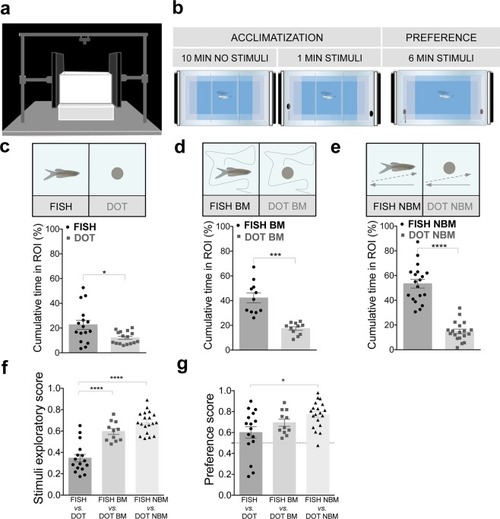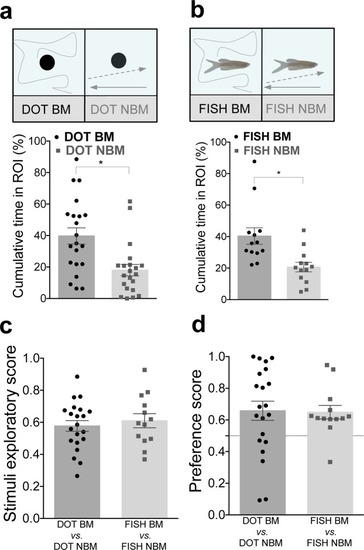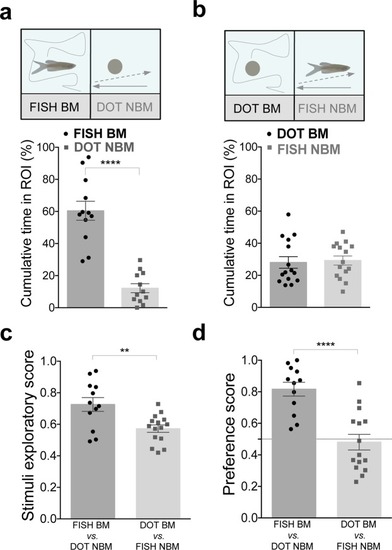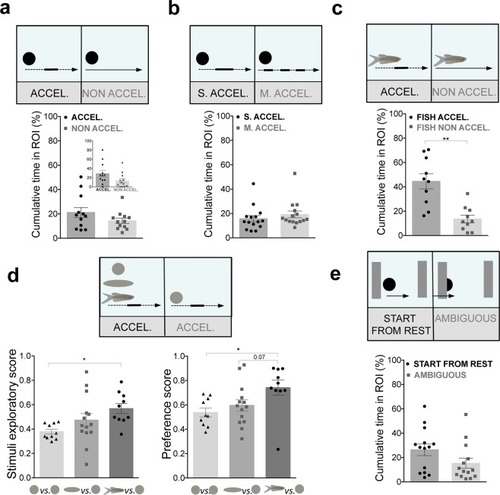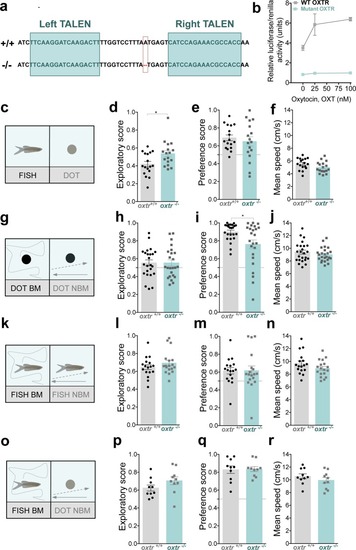- Title
-
Perceptual mechanisms of social affiliation in zebrafish
- Authors
- Nunes, A.R., Carreira, L., Anbalagan, S., Blechman, J., Levkowitz, G., Oliveira, R.F.
- Source
- Full text @ Sci. Rep.
|
Conspecific form promotes zebrafish social affiliative behaviors. |
|
Biological motion promotes zebrafish social affiliative behaviors. |
|
Congruent social stimuli promote social preference. |
|
Zebrafish perceives elementary cues of biological motion and shape enhances this preference. |
|
Oxytocin signaling is differently involved in the perception of biological motion and conspecific form. ( PHENOTYPE:
|

